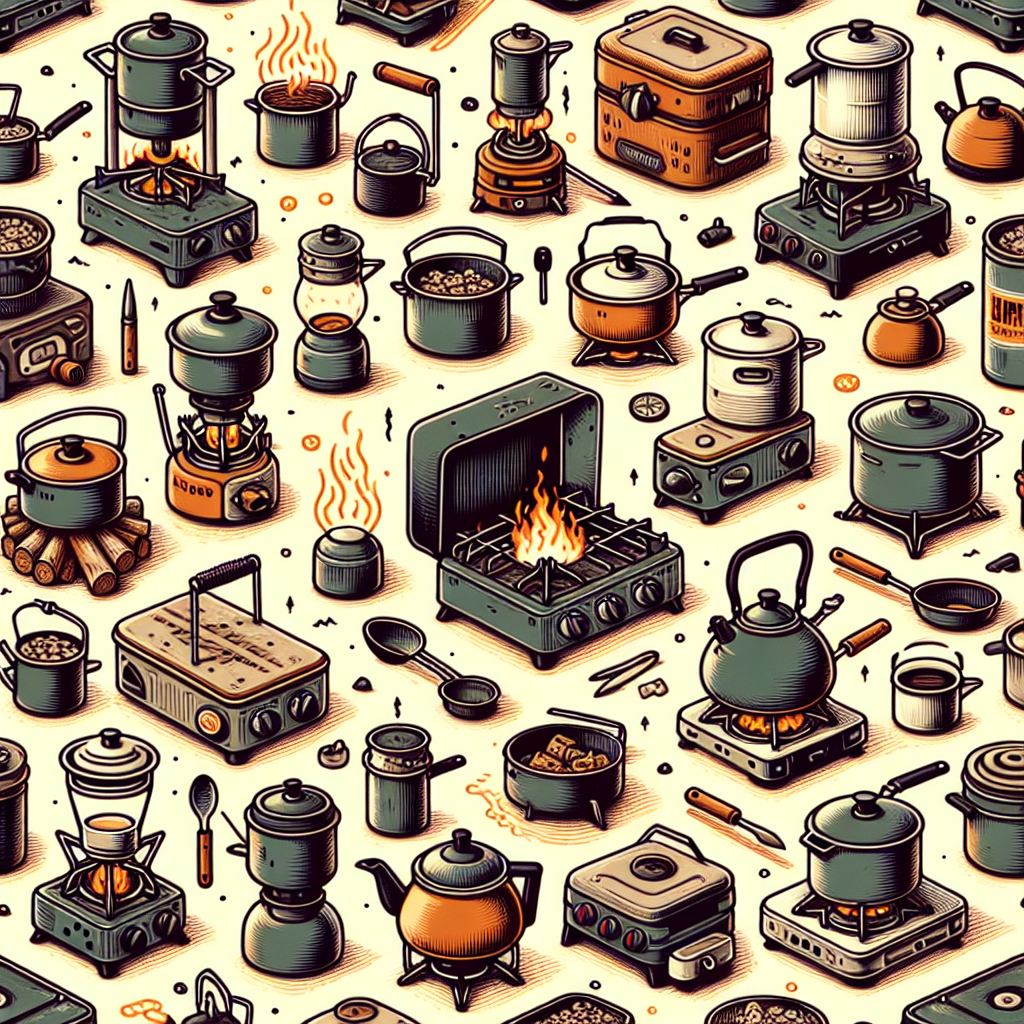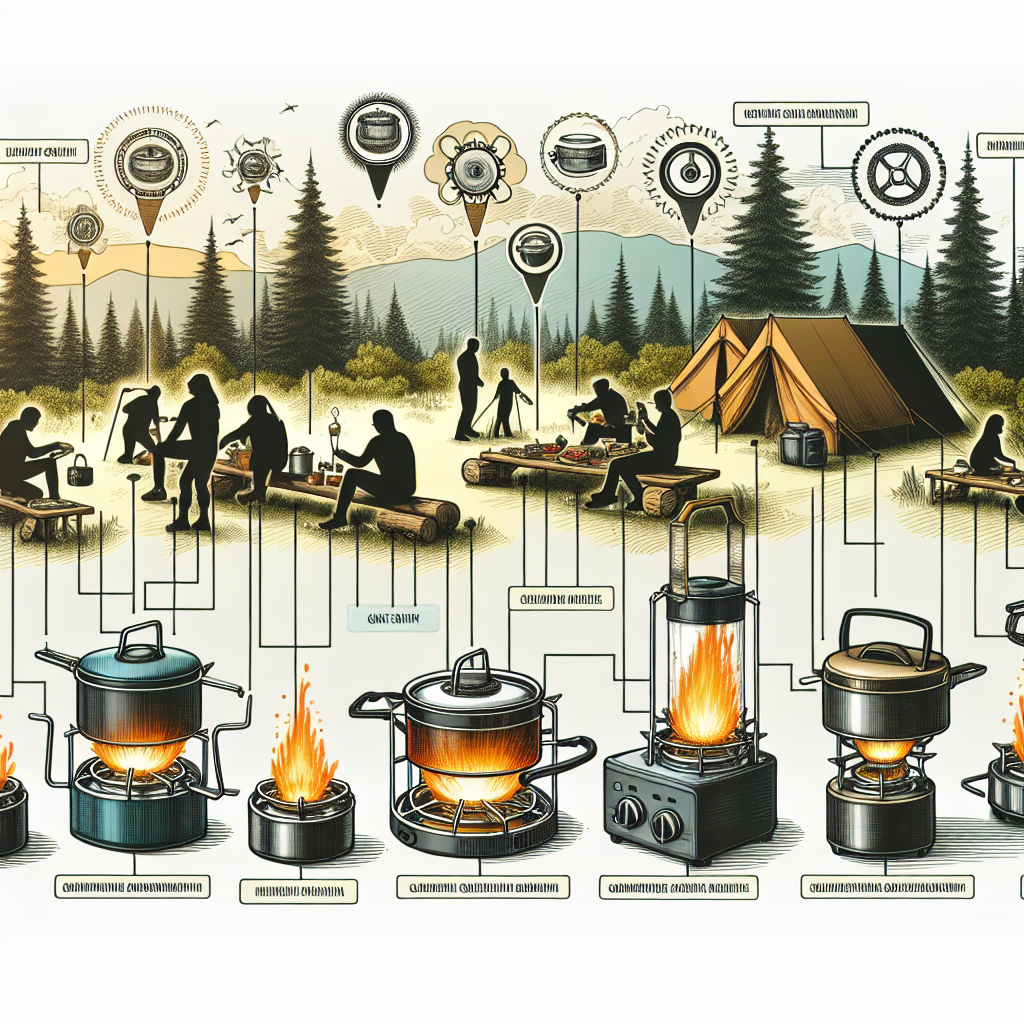

Planning a camping trip? As you gather your gear and prepare for an adventure in the great outdoors, one essential item you’ll need is a camping stove. But with so many options available, how do you choose the right one for your trip? From compact and lightweight models to high-powered stoves, there are a few key factors to consider. In this article, we’ll guide you through the process of selecting the perfect camping stove to ensure your meals are cooked to perfection, no matter where your journey takes you. So, let’s get started!
Budget
Consider your budget
When choosing a camping stove for your trip, it’s important to consider your budget. Stoves can vary widely in price, so it’s essential to determine how much you’re willing to spend. You want to find a stove that fits your financial constraints while still meeting your cooking needs.
Compare prices and features
Once you have a budget in mind, it’s time to compare prices and features. Look for different stove options within your price range and compare the features they offer. Consider factors such as fuel type, size and weight, ease of use, heat output, boil time, wind resistance, durability, and any additional features. By comparing prices and features, you can ensure you’re getting the best value for your money.
Fuel type
Determine the fuel type you prefer
There are several fuel types to choose from when it comes to camping stoves. The most common options include propane, butane, and liquid fuel. Each fuel type has its own advantages and limitations, so it’s crucial to determine your preferred fuel type based on your camping needs and preferences.
Consider availability and cost of fuel
In addition to your preference, consider the availability and cost of fuel for your chosen stove. Propane canisters, for example, are widely available in outdoor stores and are relatively affordable. On the other hand, liquid fuel may require more effort to find and can be more expensive. Evaluate the availability and cost of fuel in the areas where you’ll be camping to ensure you can easily replenish your supply during your trip.


Cooking style
Identify your cooking needs
Before selecting a camping stove, it’s essential to identify your cooking needs. Are you planning to cook simple meals or gourmet dishes? Will you be preparing food for just yourself or a group of people? Understanding your cooking style and needs will help you choose a stove that can accommodate your requirements.
Choose the right stove based on cooking style
Once you’ve identified your cooking needs, you can select the right stove based on your style. For those who prefer simple meals, a compact stove with basic features may suffice. However, if you’re a culinary enthusiast or cooking for a large group, you may want to consider a stove with multiple burners or even a camping oven attachment.
Size and weight
Consider the size and weight of the stove
The size and weight of your camping stove are important factors to consider, especially if you’ll be carrying it during your outdoor adventures. A lightweight and compact stove is ideal for backpacking or hiking trips, as it won’t add unnecessary bulk to your gear. However, if you’re traveling by car or RV, you have more flexibility to choose a larger stove with additional cooking features.
Balance portability and cooking capacity
Finding the right balance between portability and cooking capacity is crucial. While a smaller stove may be easier to transport, it may limit your cooking options. Conversely, a larger stove may offer more cooking versatility but can be burdensome to carry. Consider your specific needs and camping style to determine the ideal size and weight that suits you.


Ease of use
Look for user-friendly features
When you’re out in the wilderness, simplicity and ease of use are key. Look for camping stoves that have user-friendly features such as easily adjustable flame control, intuitive ignition mechanisms, and simple assembly processes. These features will make your cooking experience much more enjoyable and hassle-free.
Consider the assembly and maintenance process
Apart from user-friendly features, consider the assembly and maintenance process of the stove. Look for stoves that are quick and easy to set up, as well as simple to clean. Some stoves may require additional tools or have complicated maintenance procedures, which can be inconvenient when you’re on the go. Opt for a stove that offers convenience and efficiency in both assembly and maintenance.
Heat output
Evaluate the heat output required for your cooking
The heat output of a camping stove is measured in BTUs (British Thermal Units). It determines how much heat the stove can generate and, consequently, how quickly it can cook your food. When choosing a stove, evaluate the heat output required for your cooking needs. Simple dishes may require lower heat output, while more complex recipes or larger quantities of food may require a higher heat output.
Consider the weather conditions
The weather conditions in the areas where you’ll be camping will play a role in the stove’s heat output. In colder climates or high-altitude locations, you may need a stove with a higher heat output to compensate for the lower temperatures and atmospheric pressure. Take into account the weather conditions of your camping destinations to ensure your stove can perform optimally in various environments.


Boil time
Determine the desired boil time
Boiling water is a common task when camping, whether it’s for drinking, cooking, or cleaning. Determine the desired boil time for your camping stove, as this will depend on your personal preference and the urgency of your cooking needs. Some stoves are designed for quick boiling, while others may take longer to heat up.
Check the specifications for time to boil water
To determine the stove’s boil time, check the specifications provided by the manufacturer. It’s important to note that the boil time can be affected by factors such as heat output, weather conditions, and the type of pot or pan you’re using. Read reviews and seek feedback from experienced campers to get a realistic understanding of a stove’s actual boil time performance.
Wind resistance
Consider wind resistance capability
When cooking outdoors, wind can be a significant challenge. It can disrupt the flame and make it difficult to maintain consistent heat. Therefore, it’s crucial to consider a stove’s wind resistance capability. Look for stoves that come with built-in wind guards, windshields, or adjustable flame control mechanisms to help protect the flame from strong gusts of wind.
Look for features like wind guards or windshield
To ensure your stove operates efficiently in windy conditions, consider features like wind guards or windshields. These accessories can shield the flame from direct wind exposure and help maintain a steady heat output. Additionally, stoves with adjustable flame control mechanisms allow you to regulate the heat even in the presence of wind, ensuring your meals are cooked to perfection.


Durability
Assess the durability of the stove
Durability is a crucial factor to consider when choosing a camping stove. You want a stove that can withstand the rigors of outdoor use and last for multiple camping trips. Assess the materials used in the construction of the stove, such as stainless steel or durable aluminum. Look for stoves that have been tested and reviewed positively for their durability.
Read reviews and check the warranty
To gain a better understanding of a stove’s durability, read reviews from other campers who have used the stove extensively. Their experiences and feedback can provide valuable insights into how well the stove holds up over time. Additionally, check the warranty provided by the manufacturer. A longer warranty often indicates that the company has confidence in the stove’s durability and reliability.
Additional features
Consider extra features
While the basic functionality of a camping stove is to cook your meals, some stoves offer additional features that can enhance your outdoor cooking experience. Consider what additional features are important to you and your camping style. Some popular options include built-in igniters for easy flame ignition, temperature control for precise cooking, and accessories like griddles or grill plates to expand your cooking possibilities.
Look for features like built-in igniter or temperature control
A built-in igniter can save you the hassle of carrying matches or lighters and simplify the process of starting the flame. Temperature control allows you to adjust the heat output more precisely, providing greater flexibility in your cooking. These features can greatly enhance your camping stove’s usability and convenience, so keep an eye out for them when making your selection.
In conclusion, choosing the right camping stove for your trip requires careful consideration of your budget, fuel type preference, cooking style, size and weight, ease of use, heat output, boil time, wind resistance, durability, and any additional features. By evaluating these factors and comparing different stove options, you can find the perfect stove that meets your camping needs, allowing you to enjoy delicious meals cooked in the great outdoors. Happy camping and happy cooking!


Leave a Reply